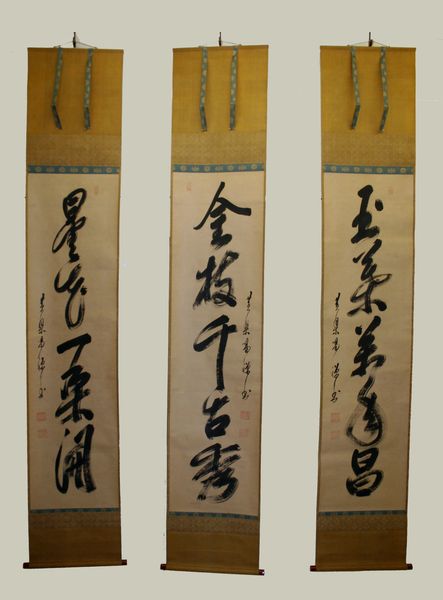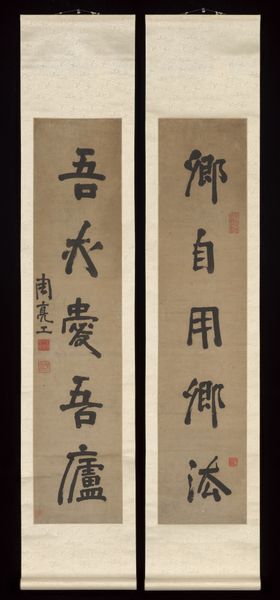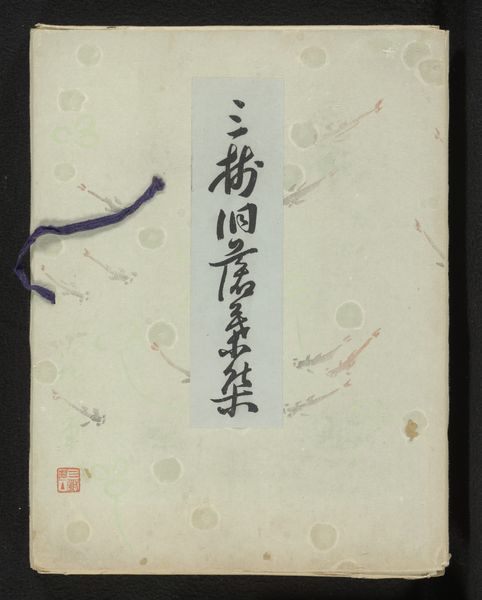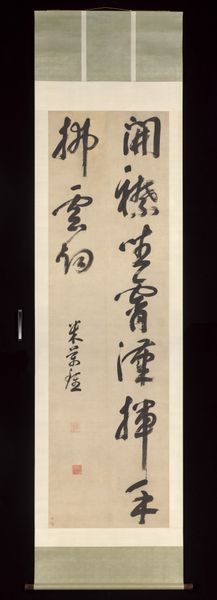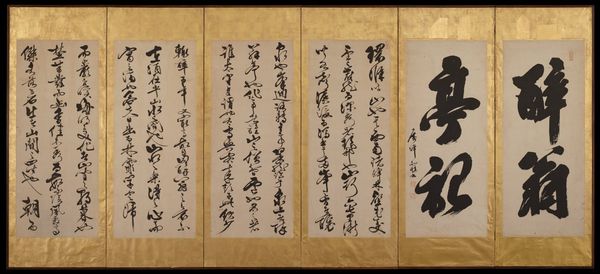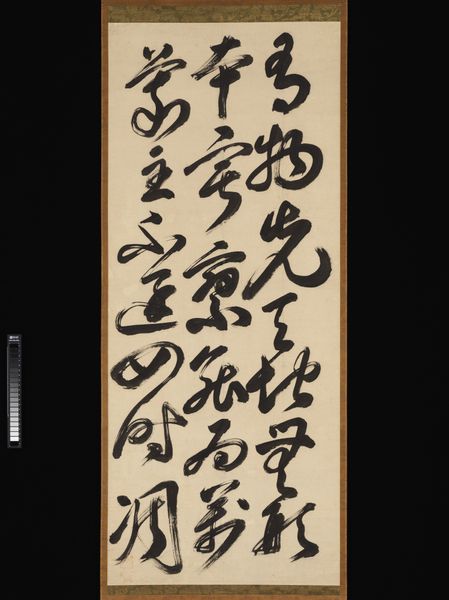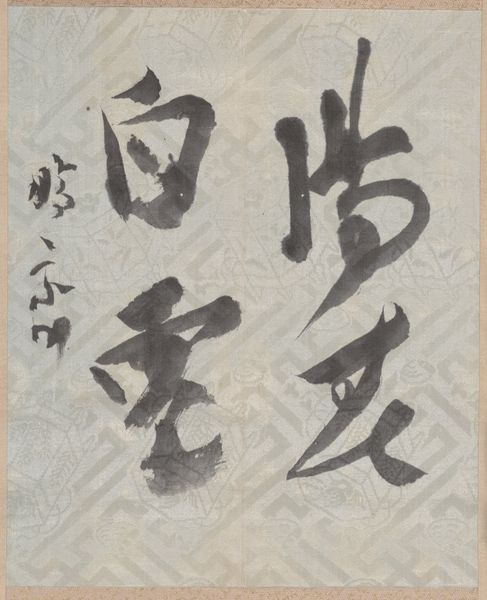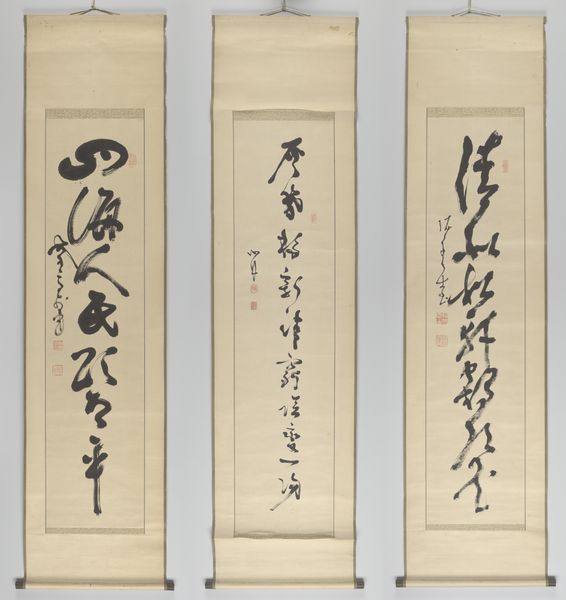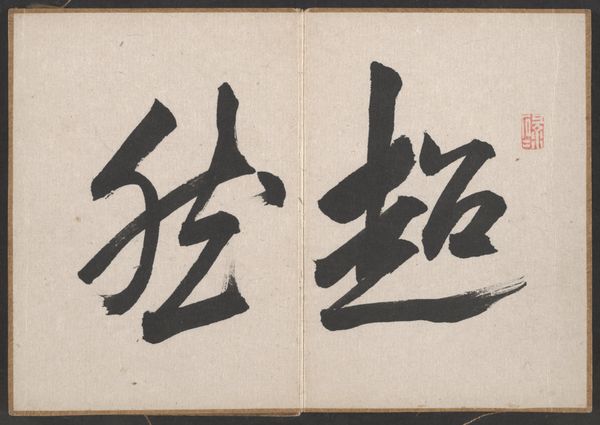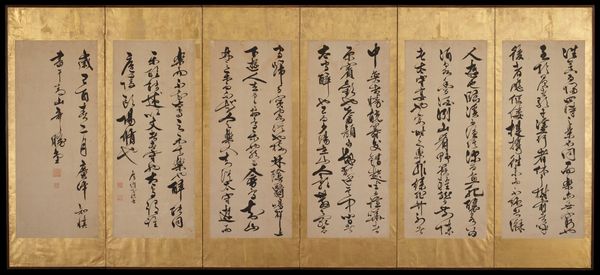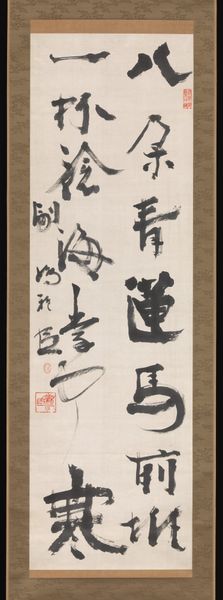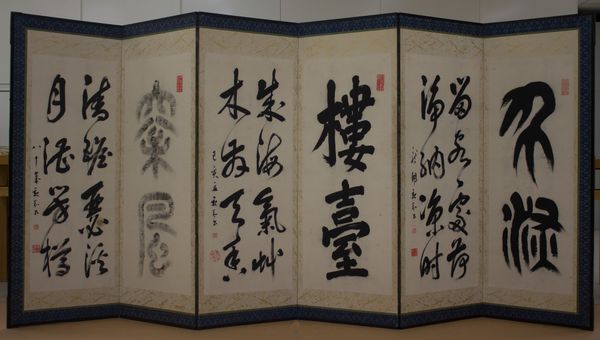
drawing, paper, ink
#
drawing
#
ink painting
#
asian-art
#
paper
#
ink
#
calligraphy
Dimensions: Image (a (right)): 48 7/8 in. × 11 in. (124.1 × 27.9 cm) Overall with mounting (a (right)): 79 3/4 × 15 3/8 in. (202.6 × 39.1 cm) Overall with knobs (a (right)): 79 3/4 × 17 1/4 in. (202.6 × 43.8 cm) Image (b (center)): 48 7/8 × 14 1/2 in. (124.1 × 36.8 cm) Overall with mounting (b (center)): 79 5/8 × 15 1/2 in. (202.2 × 39.4 cm) Overall with knobs (b (center)): 79 5/8 × 17 3/8 in. (202.2 × 44.1 cm) Image (c (left)): 48 7/8 in. × 11 in. (124.1 × 27.9 cm) Overall with mounting (c (left)): 79 3/4 × 15 3/8 in. (202.6 × 39.1 cm) Overall with knobs (c (left)): 79 3/4 × 17 1/4 in. (202.6 × 43.8 cm)
Copyright: Public Domain
Curator: Immediately, I am drawn to its serenity and rhythmic energy. The vertical orientation, the black ink dancing across what seems to be paper... there's a certain minimalist beauty, wouldn't you agree? Editor: Absolutely. What we have before us are three hanging scrolls of calligraphy entitled "Poetic Phrases." They come to us from 17th century Japan and were made by Hiin Tsūyō, employing ink on paper to create these striking characters. You'll find these at the Metropolitan Museum of Art. Curator: Seventeenth-century ink drawings – right away it's evocative. There’s a timeless quality, a deep conversation across the centuries. But there's also something so modern about the gestural quality of the marks, the raw spontaneity captured in the ink. Editor: Indeed. In calligraphic traditions, each brushstroke carries meaning, embodying the artist's spirit, reflecting not only the literal translation of the poetic phrase but the mood and the artist’s interpretation of that emotion or meaning at a particular moment. The choice of ink, the pressure applied, the speed, even the perceived flaws, all have meaning. It goes far beyond simple writing. Curator: When you look at it through that lens of cultural history and intention, it really shifts the perception. The simple beauty then begins to reveal more, almost as though the language barrier isn’t quite so solid. There's intent there, raw emotion expressed not just through symbolism, but also style. Editor: Think about it as cultural memory made visible. Calligraphy connects past to present; the symbolism resonates through time because its essence touches upon universal emotions like love, loss, and beauty. They may have seen things differently, but that expression, that core? I feel like that’s an element that keeps art evergreen, isn't it? Curator: I suppose so. It shows that despite different cultures and eras, we aren’t too different. Editor: Thank you for helping to draw connections between these striking scrolls of Hiin Tsūyō. I look forward to discussing more art with you.
Comments
No comments
Be the first to comment and join the conversation on the ultimate creative platform.
